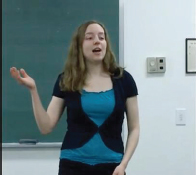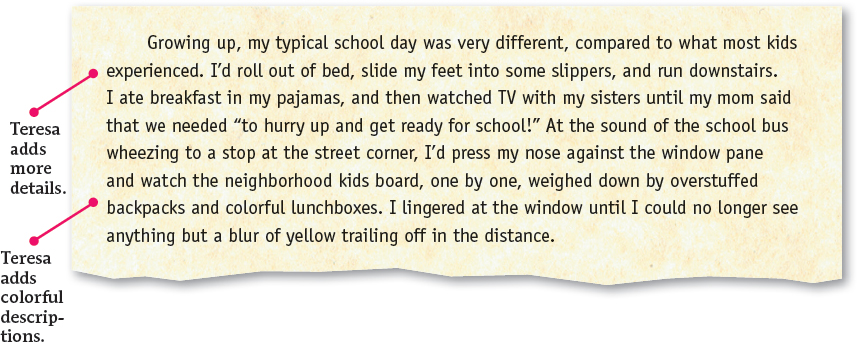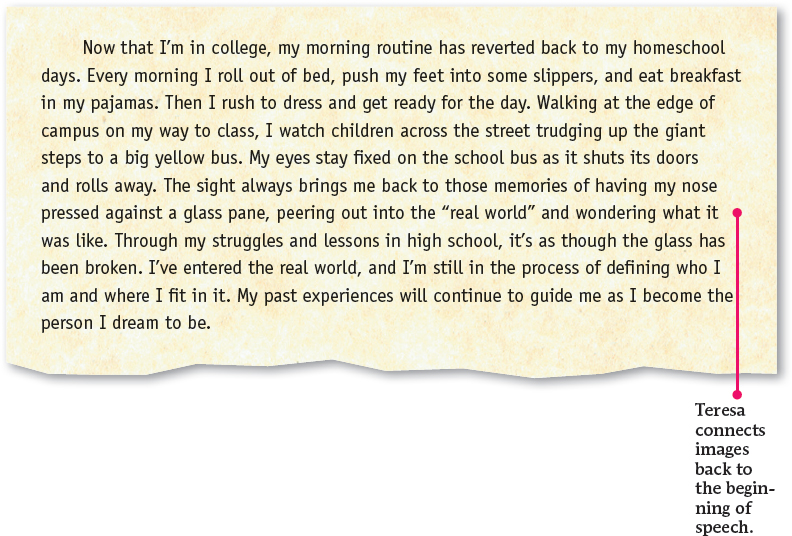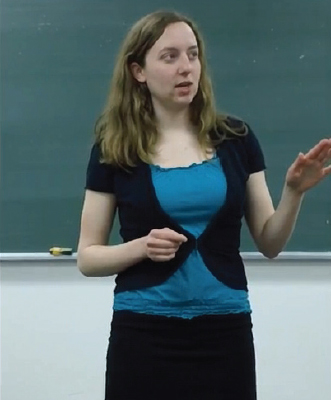FROM IDEA TO SPEECH: How to Transform an Idea into a Polished Speech
FROM IDEA TO SPEECH: How to Transform an Idea into a Polished Speech
The authors of A Speaker’s Guidebook worked on this speech project with Professor Gary Russell of Quincy University, a liberal arts university in Illinois. Professor Russell asked student Teresa Gorrell to work with us on her speech of introduction. Our goal was to show how a student can take a first draft of a speech and improve it. We wanted to see how Teresa could improve the language of her speech, as well as the delivery.

Teresa Chooses Her Topic
First, Teresa did some brainstorming, to decide what part of her life she’d like to speak about in her speech of introduction.
Teresa commented, “Based on the sample speeches of introduction that I was sent by my professor, I have gathered that my speech purpose should be to introduce myself by sharing a personal story concerning some life-shaping, character-forming aspect.”
With this understanding, Teresa did some thinking and narrowed her options to two ideas for a direction to take.

Teresa Drafts Her Speech
Teresa’s first draft speech was compelling, but the authors thought that she could add more colorful language and details to the introduction. The authors advised Teresa to “set the scene,” so that the audience could imagine her daily routine.
Original Introduction

Revised Introduction

Teresa revised her introduction by:
- Introducing the idea that a day of learning at home was different than what most kids experienced.
- Adding more details about her daily routine, from getting up in the morning, playing with her siblings, and then watching the bus from her window.
- Emphasizing the image of Teresa watching the bus take the other neighborhood children to school.
Edited Conclusion
The authors liked the conclusion but thought that the image of a building might be out of place. Since Teresa didn’t mention that symbol earlier in her speech, the authors advised her to close with an image already discussed in the speech. Teresa decided to connect back to the opening of the speech and the image of the neighborhood children riding the bus to school.
Original Conclusion

Revised Conclusion

While revising the conclusion, Teresa worked on:
- Connecting the images back to the beginning of the speech.
- Reiterating what she’s learned from the transition from being homeschooled to attending public high school.
- Using concrete language like “big yellow bus” and “nose pressed against the glass pane” that allows listeners to imagine her surroundings.

